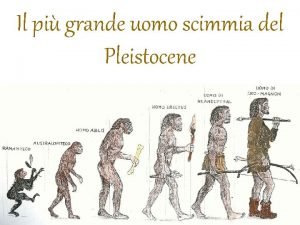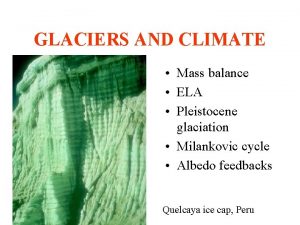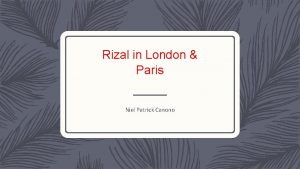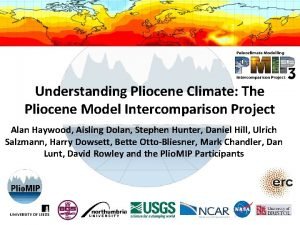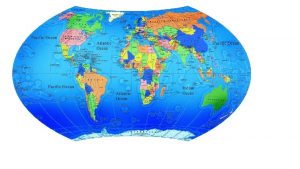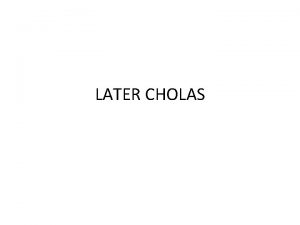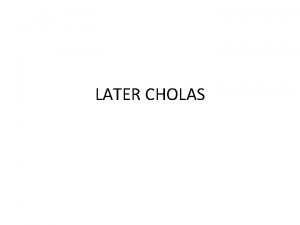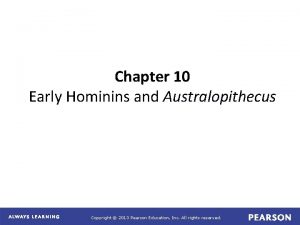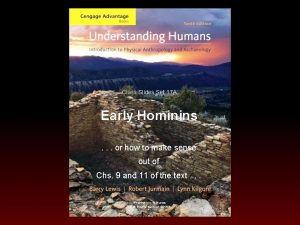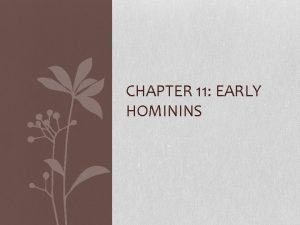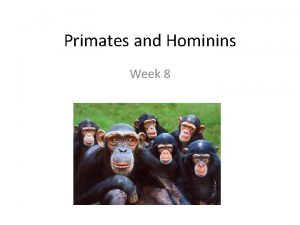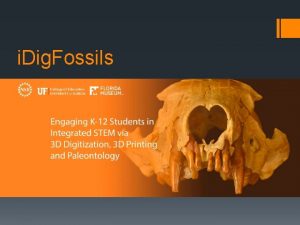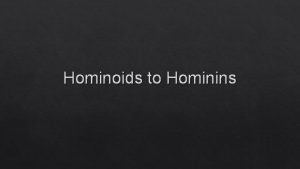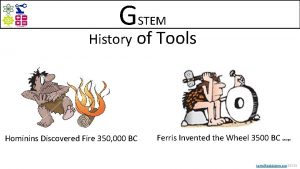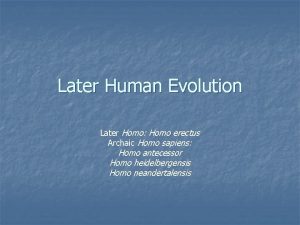Hominins of The Later Pliocene and Early Pleistocene





















- Slides: 21

Hominins of The Later Pliocene and Early Pleistocene Epochs Australopithecus and Paranthropus Pliocene Epoch 5. 3 – 2. 6 mya Pleistocene 2. 6 – 11, 700 years ag.

Cradle of Humankind

Australopithecus africanus • Raymond Dart and the Taung child • Discovered in 1924. Estimated to have been 3 years old at death.

A. africanus facts • Males were 4’ 6” tall on average and weighed 90 lbs. • Females were 3’ 9” tall and weighed 66 lbs. • Cranial volume averaged 442 cc. • The species is estimated to have existed from 3. 3 - 2. 2 million years ago. • Though fossils come predominantly from South Africa, the species is thought to have ranged in East Africa as well.

Robert Broom Fired from the University of Stellenbosch for teaching evolution. Started work at Sterkfontein in 1936 at age 70, where he found A. africanus fossils, including “Mrs. Ples”

• Sts 5 “Mrs. Ples” Sterkfontein Australopithecus africanus • Sk 48 Swartkrans Paranthropus robustus Discovered in 1948

Swartkrans has yielded the remains of 124 P. robustus individuals and remains of 5 members potentially of Homo ergaster. Dates of the cave deposits range from c. 1. 9 mya to 11, 000 years ago, putting the deposits in the Pleistocene epoch. Some of the dates are derived by thermoluminescence dating of quartz sands. A metatarsal of the big toe of P. robustus shows that it had lost all opposability. Average brain size: 530 cc.

Excavations at Drimolen 2. 04 – 1. 95 mya

Most complete female Paranthropus robustus cranium

Australopithecus sediba • Discovered by Lee Berger in 2008. • Dates to 1. 97 mya (Pleistocene epoch).

Fig. 1 Maximum parsimony cladogram of gorilla outgroup and nine hominin samples based on ASUDAS characters. Numbers are from a separate, although analogous 50% majority consensus tree of 10, 000 bootstrapped replicate data sets; they represent the proportion of included trees that support the given node. Late date suggests it may have been contemporary with early Homo. J D Irish et al. Science 2013; 340: 1233062 Published by AAAS


Mosaic anatomy

Sediba has: • Limb proportions similar to a modern human and similar hands. • A scapula similar in shape to Pongo, and shoulder harness position similar to an apes’, suggests habitual tree climbing. • A conical rib cage. • Foot and legs suggests hyperpronation (rolling foot to the inside) when walking.

Fig. 2 Hyperpronation. (A) The pedal bones of Au. sediba are superimposed on a human foot in dorsal view. J M De. Silva et al. Science 2013; 340: 1232999 Published by AAAS

Paranthropus boisei


Discovered by Mary Leakey in 1959 in Olduvai Gorge, Tanzania; Date: 1. 8 MYA (Pleistocene epoch)

Post-orbital constriction Temporal fossae

Paranthropus aethiopicus KNM-WT-17000 Found in 1985 Date: 2. 5 MYA

Australopithecus garhi Discovered in 1999 in the Afar Triangle by Berhane Asfaw. Date: 2. 5 mya.
 Paleocene eocene oligocene miocene pliocene
Paleocene eocene oligocene miocene pliocene Il più grande uomo scimmia del pleistocene personaggi
Il più grande uomo scimmia del pleistocene personaggi Pleistocene glaciation
Pleistocene glaciation Early experience vs. later experience
Early experience vs. later experience Early cpr and early defibrillation can: *
Early cpr and early defibrillation can: * Why did rizal choose morga?
Why did rizal choose morga? Manuela rented an apartment and later discovered
Manuela rented an apartment and later discovered Hát kết hợp bộ gõ cơ thể
Hát kết hợp bộ gõ cơ thể Frameset trong html5
Frameset trong html5 Bổ thể
Bổ thể Tỉ lệ cơ thể trẻ em
Tỉ lệ cơ thể trẻ em Gấu đi như thế nào
Gấu đi như thế nào Thang điểm glasgow
Thang điểm glasgow Chúa sống lại
Chúa sống lại Các môn thể thao bắt đầu bằng từ đua
Các môn thể thao bắt đầu bằng từ đua Thế nào là hệ số cao nhất
Thế nào là hệ số cao nhất Các châu lục và đại dương trên thế giới
Các châu lục và đại dương trên thế giới Cong thức tính động năng
Cong thức tính động năng Trời xanh đây là của chúng ta thể thơ
Trời xanh đây là của chúng ta thể thơ Cách giải mật thư tọa độ
Cách giải mật thư tọa độ Làm thế nào để 102-1=99
Làm thế nào để 102-1=99 độ dài liên kết
độ dài liên kết
